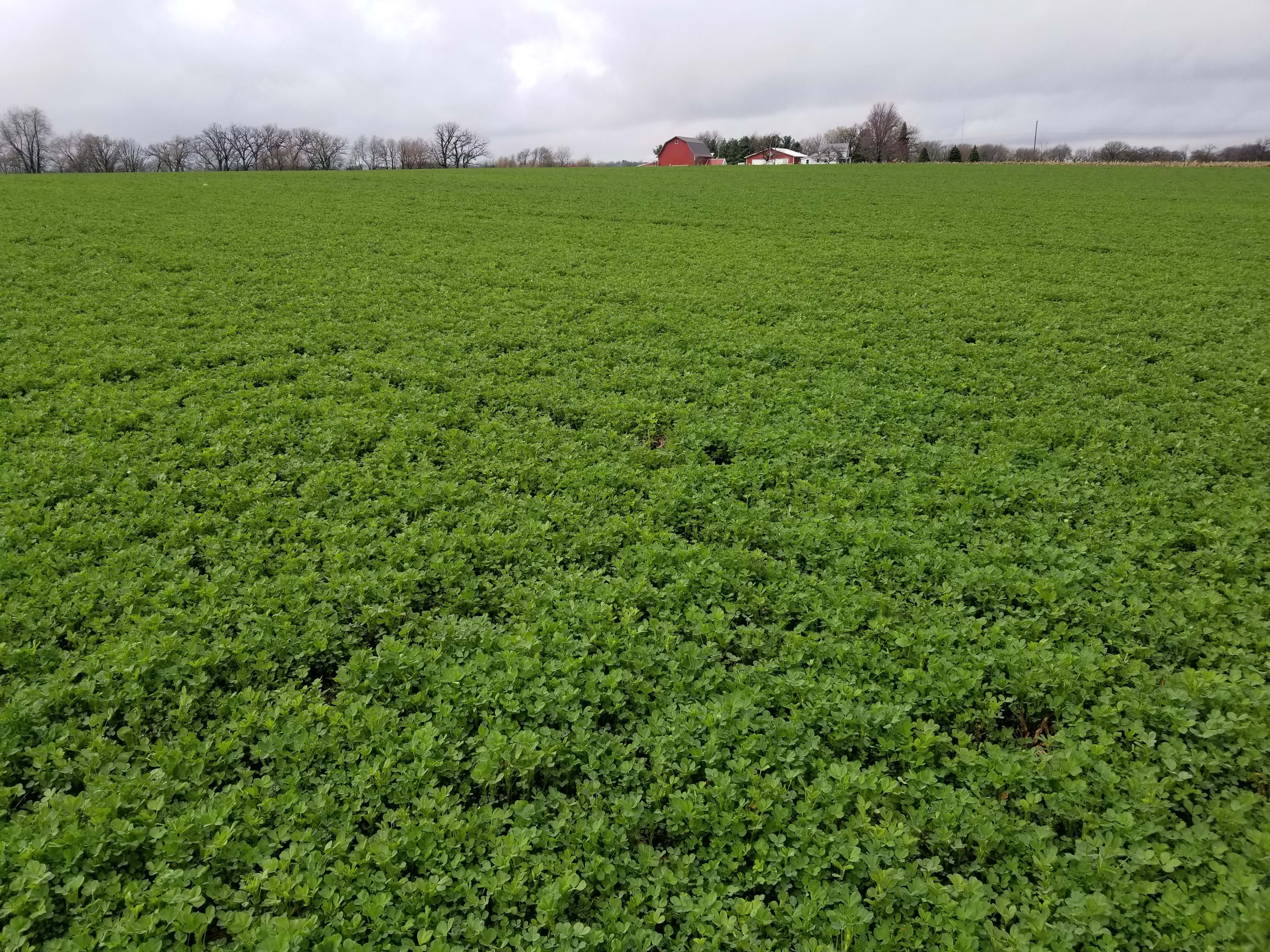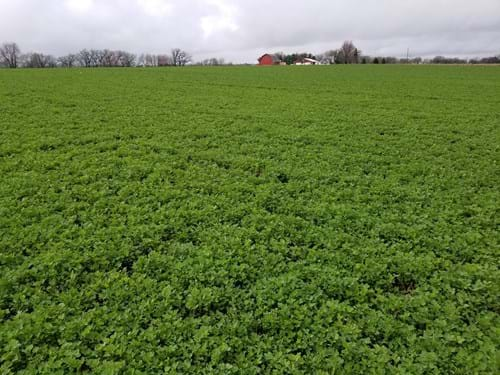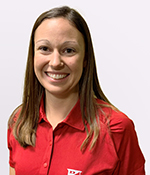Spring 2021: Key Soybean Reminders; Weather Conditions and Early Alfalfa Assessments
BY Dairyland Seed Agronomy Team
KEY REMINDERS FOR PLANTING SOYBEANS
Planting Depth: Plant 1-1.5 inches deep. Planting 1 inch or less increases the likelihood of soybean seed not germinating due to cooler temperatures or lack of moisture.
Soybeans need to take in 50 percent of their weight during the germination process. By not having the proper planting depth, you risk seeds not fully germinating or not having enough moisture to continue to grow. By planting 1 to 1.5 inches deep you increase the probability of having adequate moisture for germination and early season growth.
Soil Temperatures: Plant when soil temperatures are 55°F or more, or when air and soil temperatures will be increasing. Soybeans can germinate with soil temperatures at 50°F but are more consistent at 55°F or more. By planting in cooler soil temperatures, you increase the likelihood of Imbibitional Chilling Injury or Cold Shock Syndrome. (Yes, soybeans can get this too). Cool wet soils (less than 60°F) increase the likelihood of seedling succumbing to Pythium and Fusarium. (Cool wet soils also increase the potential for Sudden Death Syndrome (SDS) infecting the plant.)
Seed Treatments: If planting early, use a quality seed treatment. A quality seed treatment that contains an insecticide will help with germination and protect the seed from early to mid-season insects such as Bean Leaf Beetle, Seed Corn Maggot, Soybean Aphids and Soybean Cyst Nematodes. As stated previously, seed treatments help with cool season seedling diseases such as Fusarium, (early infection of SDS), Pythium and warm season diseases such as Phytophthora and Rhizoctonia.
Research has also shown that treated soybeans tend to have increased plant population of 12-20,000 versus untreated soybeans. Having a product that helps seedlings survive is especially critical when dealing with soybean seeds that have reduced germination percentages like we have this year, compared to other years.
Not all seed treatments are equal. Just because something has a pretty color does not mean it is the best investment.
Plant Populations: Recommended seeding rates are 140,000 to 150,000 seeds in a 30-inch row. Soybeans can yield with less than 140-150,000 seeds planted, however, the issues that suggest maintaining a higher seeding rate are:
- Less than ideal planting seedbed
- Hail
- Reduced germination scores/percentages
- Wildlife i.e. geese, deer, etc.
- Seed and seedling diseases
- Soil types
If you have questions regarding this or other Agronomic issues, contact your local Dairyland Seeds Representative. Stay safe and have a successful planting season.
POTENTIAL PITFALLS OF PLANTING IN COLD WET CONDITIONS
In the course of our careers, either as farmers or agronomists, we have all had instances where the weather forecast has switched from warm, dry and sunny, to cool, cloudy and wet, while we are in the midst of planting. The problem with cold, wet weather, is that it increases the probability of Imbibitional Chilling Injury or Cold Shock Syndrome. The key words “Chilling Injury” or “Cold Shock” truly describes what takes place to the seed.
When a plant starts its germination process, it takes in or imbibes (absorbs) water to rehydrate the cells. Hence the reason why the seed swells. In corn, the seed must take in 30 percent of its weight in water to start the germination process. In soybeans, the seed must take in around 50 percent of its weight in water to germinate.
The first water that seeds imbibe usually occurs within the first 24 to 48 hours. If that water is cold (less than 50°F), it may cause cells to burst or “leak”. This disruption of cells in a corn seed may cause the radicle to abort. It may also cause proliferation of seminal root development, corkscrewing of the coleoptile as it leaves the seed, as well as leafing out underground. In soybeans it may cause the seed itself to swell, but the radicle will not fully develop, or the initial shock may cause the seed not to germinate. Seed coat thickness and/or intactness can have an impact on how quickly water enters the seed and, therefore, the speed of absorption.
A seed or seedling that has cold shock syndrome, takes more time to germinate, and has a higher potential for disease to infect the seed or young seedling. Quality seed treatments can help protect the plant from disease, but they cannot protect the plant from cold water. Combine Cold Shock and disease, with other factors such as soil crusting, compacted soils or deep seed placement, and you increase the likelihood of seed or seedling loss exponentially.
Another factor that may increase the severity of Cold Shock Syndrome is the actual size/shape and/or weight of the seed. It stands to reason that if you have a seed that weighs more, you will need to bring in more water to reach your 30 or 50 percent of weight. If that water is cold, you also increase the potential for injury. Large rounds in corn tend to have more of an issue or concern when dealing with Cold Shock, either due to their weight, location on the cob during harvest, thickness of the pericarp, and/or how that seed dries.
Instances of cold Injury in dry soils is also very common. What happens is the cold temperatures (28°F or less) penetrate the top 1 to 3 inches of soil and kills plant tissue, the radicle and growing point.
The take home statement is that the first 24 to 48 hours in a seed’s life in the soil, is critical to the health of the plant, how many plants you potentially could have at harvest, and subsequently yield.
EARLY ALFALFA ASSESSMENTS SHOW PROMISE
After consecutive years of widespread winterkill, it’s incredibly refreshing to see lush, bright green carpets instead of a patchwork of various shades of brown and olive. A week of well above-average temperatures followed by rain has allowed established alfalfa fields to quickly flourish early-on this growing season, giving hope for great yields and healthy stands in 2021. One reason we are seeing an excellent Spring start is due to a mostly normal alfalfa harvest season in 2020 causing reduced stress going into the Fall. The majority of the Dairyland Seed territory saw timely rains coupled with sufficient harvest windows and consistent cutting schedules which allowed the plants to adequately recover between cuts and before Winter. We are consistently seeing 6 to 8 inches of growth across Southern Wisconsin and 4 to 6 inches as you move north into the Upper Peninsula. Overall, plants appear to be healthy both above- and below- ground with a lot of potential for an excellent growing season.
Once an alfalfa seed has been planted, early root growth accounts for nearly 80% of what you see above-ground and will help dictate the future success of that plant. Beneficial Rhizobium bacteria begin to inhabit the growing root hairs only 4 weeks post-germination to begin the process of nodulation for nitrogen fixation. At the same time, you’ll see the two cotyledons emerge from the soil followed by the singular unifoliate leaf, and then the first tri- or multi-foliate leaves after that. Additional stems and buds rapidly develop, especially in temperatures above 68 degrees F, so that the alfalfa plant can begin to pull the lower axillary buds below the soil surface to form the important crown. This contractile growth is what allows the alfalfa plant to survive over Winter and begin regrowth each Spring which is why late Summer seeding deadlines should be strictly adhered to in order to achieve adequate crown development prior to first frost.
Spring regrowth is predominantly from these crown buds formed during late Summer and early Fall in the previous growing year. In response to warm air and soil temperatures, these buds utilize stored energy from the roots to elongate and produce new shoots at the base of the crown, further emphasizing the importance of having adequate reserves for a flourishing Spring green-up. New growth after a harvest can come from both crown buds and at the ends of severed stems called axillary buds. This new growth uses stored root carbohydrates but once the plant reaches approximately 6 inches tall it begins to replenish those root reserves necessary for regrowth after cutting or after Winter. Additionally, after the first cutting each Spring, new crown buds will begin to grow in anticipation of the subsequent cut while the taller stems approach flowering, ready to be harvested soon. Waiting too long to harvest or cutting too low will take away the yield potential for the next cut and deplete root reserves the plant may need if weather, weed, or pest pressures occur.


Janesville, WI 4-9-21
 |
 |
 |
 |
| Brian Weller Western Region 507.456.3034 |
Dan Ritter Central Region 219.863.0583 |
Branden Furseth Northern Region 608.513.4265 |
Amanda Goffnett Eastern Region 989.400.3793 |
